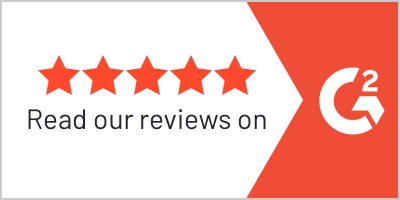Alright, settle in and buckle up buttercup, because this isn’t a quick fix, it’s a fundamental shift in how you approach one of the biggest challenges in sales. We’re talking about handling objections in sales, and I’m going to drill this into your skull if I have to. Because frankly, most of you are missing the boat. And you’re missing the boat because you’re at the airport. Or you’re paddling upstream with a hole in your canoe and using a spatula as a paddle. You’re clinging to outdated tactics and tired scripts when you should be diving deep, understanding the real currents, and navigating with finesse.
Let’s be clear: “handling” objections is an awful term. It conjures up images of manipulation, of slick sales tricks, of trying to pull a fast one on the prospect. And let me tell you, nobody wants to be “handled.” In fact, you can ask my wife, she will definitely tell you she doesn’t want to be “handled”. On a side note, if you’ve cracked this code in your relationships, hit me up. I’ll take the advice.
People want to be seen, heard, understood, and respected. They want to know that you genuinely care about their needs and concerns, not just your commission check. Remember, it’s about the Buyer’s Experience through The Seller’s Journey. There is no Buyer’s Journey.
Objections Aren’t Roadblocks, They’re Road Signs
They point you in the direction of the real issues, the underlying anxieties, the unspoken questions that are preventing the prospect from saying yes. They’re breadcrumbs on the path to a closed deal, and you’re ignoring them at your peril. An objection means you’re still in the game. It means the prospect is engaged, they’re considering your offer, and they’re giving you a chance to prove your worth. It’s an invitation to a deeper conversation, a chance for them to fall in trust with you and provide a map along with a compass to a win-win solution.
Now, let’s dissect the three cardinal sins of handling objections. Commit these to memory, because they’re the root of most sales failures.
Sin Number One: Superficial Understanding
You hear an objection – “Your price is too high,” “I need to talk to my boss,” “We’re already working with someone else” – and you immediately jump to a pre-programmed response. You’re treating the symptom, not the disease. You’re reacting instead of reflecting. You’re putting a band-aid on a broken bone.
You need to become a sales psychologist. Marinate in the objection, don’t go into handling objections mode. Dig deeper. Ask them to explain more. What are your concerns in relation to price over the Economic Impact we’ve already discussed? Is this your concern or is this coming from someone else on the team? Don’t just accept the surface-level objection. There’s a picture in their head and we want them to help paint that picture so we can understand.
Unearth the underlying concern. “Your price is too high” could mean anything. Maybe they genuinely have a tight budget. Maybe the pain isn’t just about the price, maybe it’s because they are nervous to ask for approval? Or maybe something was tried recently that failed. Maybe they’re comparing you to a competitor who’s cutting corners. Maybe they’re just testing you. You won’t know until you ask. “Tell me more about that,” “What’s your biggest concern about the price?”. And by all means don’t get sucked into the ROI conversation, which is the dumbest thing our prospects bring up during negotiation. You can read more about that here.
Sin Number Two: Misidentified Stakeholders
So often you’re talking to someone who’s relaying objections from someone else, and you don’t even know it. You’re fighting a phantom enemy. You’re addressing the messenger instead of the message sender.
You need to identify the real decision-makers, the influencers, the budget holders, the skeptics. Who are the key players in this drama? What are their individual perspectives? What are their priorities? Don’t waste your precious time and energy on someone who doesn’t have the power to say yes. It comes down to a few simple questions. “When you take this back to your team, who are the skeptics on your team on what are they typically skeptical about?” Knowing this allows you to pre-address some of the unforeseen issues. It will help turn your contact into a champion because they will understand you have their back.
And after this question and conversation this is the next one to ask. “So, let’s say you love it and they hate it, what happens next?” Now you understand who has the real power. And you will also understand more about how decisions are made within the organization. In many cases it allows you figure out your roadmap to a closed won deal.
Sin Number Three: Objection Aversion
You’re afraid of objections. You see them as a threat, a rejection, a personal insult. You try to avoid them at all costs. This is a recipe for disaster. I assure you, this belief system is futile and you will not be in sales much longer.
Objections are inevitable. They’re a natural part of the sales process. And the sooner you embrace them, the sooner you can address them and move the deal forward. The best salespeople anticipate objections. They pre-handle them. They bring them up themselves before the prospect even has a chance. They create a safe space for the prospect to voice their concerns. They turn objections into opportunities.
How do you pre-handle objections? It’s simple, but powerful. Again, back to the previous example, knowing the skeptics is more important than knowing the decision maker. Here are some other suggestions. At the beginning of the sales process, ask questions like., “What are the biggest obstacles you foresee in getting this approved?” “What happens if you don’t meet the timeline we discussed?” “What are the other competing projects that could influence this decision?”
These questions not only help you identify potential objections, they also give you valuable insights into the prospect’s decision-making process, their team dynamics, and their organizational culture. They also position you as a proactive problem-solver, someone who’s thinking ahead and anticipating potential challenges.
Conclusion
Forget the “Big Book of Objections.” It’s a relic of a bygone era. Instead, develop a “Big Book of Questions.” Become a master of inquiry. Be genuinely curious about your prospect’s needs, their challenges, and their concerns. Don’t just listen to their words, listen to their meaning. Don’t just hear the objection, help them explain more about the emotional feeling they have around these objections.
Stop handling objections. Start marinating in them. Let them soak in. Analyze them. Understand them. And most importantly, use them as fuel to drive the sale forward.
This isn’t about manipulation, it’s about genuine connection. It’s about building trust, demonstrating value, and helping your prospect find the best solution for their needs. And if you do it right, the objections won’t just disappear, they’ll transform into opportunities. They’ll become the very reasons why the prospect chooses you over the competition. They’ll become the stepping stones to a closed deal. And that, my friends, is the real art of handling objections in sales.
Need help training your team on objection handling? Contact us for a free 30 minute consultation. I promise I’ll give you a few nuggets you can use for free.







